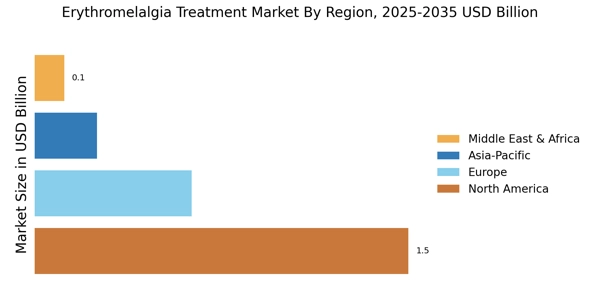Leading market players are investing heavily in research and development in order to expand their product lines, which will help the Erythromelalgia treatment market, grow even more. Market participants are also undertaking a variety of strategic activities to expand their global footprint, with important market developments including new product launches, contractual agreements, mergers and acquisitions, higher investments, and collaboration with other organizations. To expand and survive in a more competitive and rising market climate, Erythromelalgia treatment industry must offer cost-effective items.
Manufacturing locally to minimize operational costs is one of the key business tactics used by manufacturers in the global Erythromelalgia treatment industry to benefit clients and increase the market sector. In recent years, the Erythromelalgia treatment industry has offered some of the most significant advantages to medicine.
Major players in the Erythromelalgia treatment market, including Teva Pharmaceutical Industries Ltd, Xenon, Biogen, ICAGEN, INC, Pfizer Inc, Zydus Cadila, ANI Pharmaceuticals, Inc, Novel Laboratories Inc, Norvartis AG, Amneal Pharmaceuticals LLC, ALLERGAN, Bausch Health, Akorn, Incorporated, INDOCO REMEDIES LTD, Somerset Therapeutics, LLC, Galderma Laboratories, L.P., and Acorda Therapeutics, Inc, among other, are attempting to increase market demand by investing in research and development operations.
The creation, manufacture, and marketing of prescription and over-the-counter medications, as well as items for eye care, are the areas of expertise of a healthcare company by the name of Novartis AG (Novartis). It provides medications for treating solid tumors, immune system problems, infections, cardiovascular disease, dermatological problems, neurological problems, ophthalmic and respiratory illnesses, cancer, and neurological abnormalities, among other conditions. The company sells biosimilars and generic drugs through Sandoz. Novartis conducts research in several disease-related sectors through the Novartis Institutes for BioMedical Research (NIBR).
The company operates a network of companies and offices in the Americas, Europe, the Middle East, Africa, and Asia-Pacific. The Novartis corporate headquarters are located in Basel, Switzerland.
Amneal Pharmaceuticals Inc. (Amneal) is a pharmaceutical firm that develops, manufactures, and sells medicines. Pharmaceuticals, both generic and specialty, are sold by the company. It also makes Activella, Albenza, Dexedrine, Nizatidine Oral Solution, Pyridiu, and medications for oncology, inflammation and pain, disorders of the central nervous system, endocrinology, and parasitic infections. Amneal sells products in a variety of dosage forms, such as oral solids and liquids, injectables, topicals, creams and ointments, transdermals, inhalation, ophthalmic and otic liquids, and other device-driven products. Hospitals, chain pharmacies, individual pharmacies, wholesalers, and distributors are among the clients it serves.
The company has operations in India, the UK, Ireland, and Switzerland. Amneal's headquarters are in Bridgewater, New Jersey, in the US.


















Leave a Comment